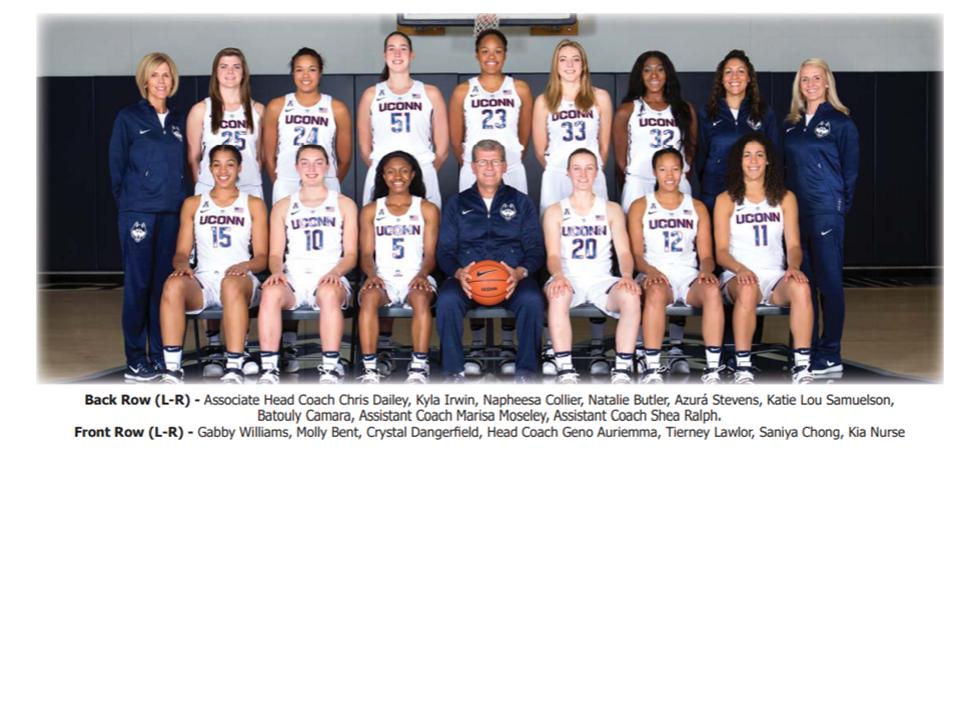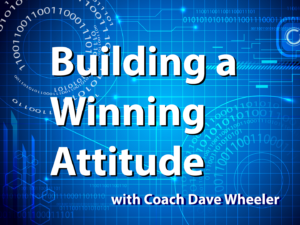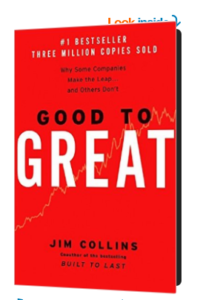Tag: Win or Learn
Ball-First M2M Defense & The Play that Beat UConn WBB 2017
This article is about the play that prevented UConn Women’s Basketball Team’s 111 game winning streak from going to 112… and a type of basketball defense (Ball-First M2M) that would have changed the outcome.
I teach “Ball-First Man-2-Man Trapping Defense” and the loss of the UConn Women’s 2017 Final Four game to Mississippi State provides an opportunity to take a look into some of the principles of BFM2M. Let’s start by checking out the video of the last play Mississippi State used to beat UConn in the 2017 Final Four…
The reason that Mississippi State’s Morgan William was able to get off her jumpshot was due to a mixup on the defensive coverage by UConn. Morgan William is probably the smallest player on the floor so if even one of the UConn players had been closer to her, the shot would certainly have been blocked or at least been a lower percentage. As you see in the video of the last play, there were a bunch of UConn players defending, swapping coverage as Mississippi State players moved around at the top of the key.
Here is where the breakdown occurred and where UConn lost… as Morgan Williams begins to drive, #11 Kia Nurse (who was covering another player too) jumps up to take Morgan. Morgan starts to drive and (this is where BALL FIRST M2M comes in) #12 Soniya Chong, who is now covering MS player #00, waves at the ball handler instead of coming over to trap and stop the drive. If you watch the play further, Kia Nurse backs away from Morgan William, probably under the assumption that #15 Gabby Williams would stop her.
Ordinarily that is a pretty good assumption since Gabby Williams is one of the most athletic players for UConn, but Morgan William has too much speed and momentum so Gabby is unable to get to her in time to stop the shot.
How would it change with Ball-First M2M defense?
Kia Nurse would have continued to aggressively defend the ball (Rule#1-The Ball is our first priority). By staying with the offensive player, Kia would have provided a “wall” of sorts so Morgan could not easily change direction.
Next, Soniya Chong would have jumped into the path of Morgan and placed her body so that she and Kia would create a trap. This is a difficult move if a player has never done it before because without a strong focus on a particular part of the play, it can go wrong quickly.
Players who use Ball-First M2M know that the key to this move is to keep your eyes on the ball. You know that the driver cannot change direction since that would bring them into your other defender and the ball would be open for a possible steal.
By focusing on the ball, you also are able to anticipate a pass to the player you are “leaving” (and intercept a pass if it is thrown). If the offense dribbles into the trap or tries to “plow through” the approaching defender (who is focusing on the basketball) needs to be ready to grab the ball (probably at waist or chest height) and rip it way from them. Other offensive players, usually the taller ones, may try to bring the ball over their head as they step through the trap… which is another reason all players need to keep an eye on the ball.
No one scores without the ball. Every time the ball leaves a player's hand there is an opportunity for a steal. - Coach Dave Wheeler
I know what I have described is a lot to expect from someone who has not used Ball-First M2M and hasn’t developed the skills of where to look (hint: Ball-First) and where they need to put their body to stop a driving offensive player. Ball-First M2M is not an overnight fix, especially since you need ALL the players on the defensive team to understand the approach so they can deal with 2nd and 3rd options. It can be, however, highly effective.
Bottom Line…
Even though I am a long-time fan of UConn WBB, I have to give credit to Mississippi State. They played a tough game. I also appreciate the effort put in by UConn.
It is unfair to focus on one play as the reason they lost since there were countless opportunities to get another basket earlier in the game. Every player and every coach knows that just one more made shot or an offensive rebound or a defensive stop and there would never have been an overtime period. I give credit to all the players, coaches and parents who helped both teams get to this game. Few people have even the smallest sliver of a glimpse into all the preparation and hard work that is put in at this level of basketball.
Having said that, the reason for this article is to show how Ball-First M2M defense can work at the highest levels. There is much more to Ball-First Man-to-Man defense that I have not mentioned in this article… most importantly, traps in other areas of the court. Those aspects will have to wait for another article. If you want to be sent a brief email when new articles are published for this blog, be sure to sign up for our email notification service. As always, your comments are encouraged and appreciated.

Do you have a Winning Attitude?
 What does it take to become a winner? Many people talk about a “Winning Attitude” but how many actually practice it? How many of us even know what goes into a winning attitude?
What does it take to become a winner? Many people talk about a “Winning Attitude” but how many actually practice it? How many of us even know what goes into a winning attitude?
Today I will look at what goes into a winning attitude, using basketball as the example, and how we can cultivate a winning attitude in ourselves and our teams.
Quick Summary of a Winning Attitude:
- A Winner sets high standards
- A Winner expects to win
- A Winner learns from losses
- A Winner prepares to win
- A Winner embraces challenges
- A Winner enjoys the process
“How you do anything is how you do everything”
Have you ever heard the phrase, “If you want something done, give it to a busy person”? The thinking is that someone who is already busy will already have the habits in place to get things done where someone who finds ways to NOT be busy is simply avoiding getting things done. Winning is a habit and like the saying goes, “How you do anything is how you do everything.” If you have a winning attitude, you will apply it to all aspects of your life. It doesn’t mean you have to be competitive with everyone in your life (that’s called “a jerk”) but you can recognize what your goals are and do whatever is needed to meet those goals.
How do I apply this as part of a Winning Attitude?
There are opportunities every day to “let it slide” or settle for less than the best that you can do. Winners know that if you will give up on the small things you will give up on the big things too. Small actions prepare you for big successes. A Winning Attitude means holding yourself to a higher standard than other people. Most people are not winners. It is a fact of life, but winning is a choice and you can make that choice … every single day.,
“In it to Win it”
If you are going to play, you are going to win. A Winning Attitude is about committing to being a winner. Are you going to win every single time? Not necessarily… but winners start with their goal in mind and focus on what it takes to win.
“Win or Learn”
Even if you are committed to winning, there will be times when you encounter someone who is better prepared or has better strategies or tactics and you come out on the short end of the competition. Does this mean you Lose? Not necessarily… You have a choice. You can either Lose or Learn. If you quit after you are beaten, then you Lose. If you Learn from the experience and apply it to make you and your team better, then you are better prepared to win the next time. As motivational speaker Les Brown says, “It’s not over until I win.”
The Will to Win vs. The Will to Prepare to Win
Winning is a result of preparation. Games are won based on what you do in practice and HOW you practice always shows up in how you play. Winners are always looking for ways to improve, whether it is physically, mentally or by developing their skills.
Embrace The Challenge
Someone with a Winning Attitude is not intimidated by challenges. They are seen as opportunities to test your abilities and develop confidence. Winning means that you find ways to win, even when there are obstacles or strong competition.
In fact, winners enjoy the challenge. They recognize that without challenges and obstacles, they can never find out how good they really are. That’s why going undefeated by playing poor competition can be a curse in disguise. Certainly you want to win when the stakes are the highest, but if you don’t face any competition before the championship game then how do you know if you are ready? Have you faced strong competition that could bring out the best that you have? A winner looks for strong competition because they know that it will make them better.
How do I develop my Winning Attitude?
Practice, Practice, Practice…
Challenge. Learn. Repeat.
A winning attitude is all about
1) Embracing Preparation & Competition,
2) Learning and Growing, and
3) Enjoying the process.
You can change your attitude immediately… if you recognize where it needs to change. This article has given you some ideas but it is up to you to catch yourself when you are not in a “winning attitude” and make the necessary changes.
This sounds hard. Is it realistic?
Like I’ve said before, not everyone is a winner even though anyone can become a winner. Will it take extra effort? Absolutely. Will you have to give up some things that might have been “nice to have”? Sure. Will it be worth it? Certainly.
An excellent book for anyone looki ng to develop a winning attitude is “Good to Great” by Jim Collins. One of the key ideas that Jim Collins writes about is the reason there are so few “Greats”.
ng to develop a winning attitude is “Good to Great” by Jim Collins. One of the key ideas that Jim Collins writes about is the reason there are so few “Greats”.
“Good is the enemy of Great” – Jim Collins
Most people settle for “good” or “good enough” while winners are the ones that go for “Great”. The funny thing Jim Collins found as part of his research for the book was that it takes no more effort to be great. Different effort and concerted, focused effort but not necessarily “more effort”. That begs the question… If you can see yourself as good, why not go for great?
Is Winning Important?
 Do you want the short answer? Here it is…Yes.
Do you want the short answer? Here it is…Yes.
Winning is important… but not for the reasons that most people think. Let me ask you, “What is your relationship with the concept of winning?”
Sports are a metaphor for life…
… and if a person doesn’t learn what it takes to win through competition and sports, it is very likely that they will struggle to learn it in other ways throughout their life. The idea of “Winning” is not without controversy. It is a concept that many people have deeply held beliefs around, often to the detriment of the people they are trying to develop… their players.
The 3 Faces of Winning
There seem to be three reactions to the topic of “winning”; not counting Charlie Sheen’s “approach”, which we won’t be addressing.
First, there is the “winning at all costs” camp which justifies all kinds of reprehensible and sometimes immoral or even illegal behavior in the “pursuit of winning”. Eventually though, these people are removed from their positions of authority because their behavior is not tolerated by their players, parents and their organizations.
On the other hand…
On the other (second) side of “winning” are the people who feel “everyone is a winner” and their downfall is that as they pass out trophies for everyone, they create youngsters who feel entitled to win at everything they do. Sadly, these kids will either be disappointed when they realize that the real world doesn’t work that way or they will simply give up without putting in any serious effort. This philosophy of “winning” takes away the reward for effort and improvement and cripples kids chances of achieving their dreams in the future.
Another way to look at this is through Carol Dweck’s framework from her book titled “Mindset”. She explains the difference between a “growth mindset” where a loss is simply feedback for future growth versus a “fixed mindset” which says that someone either has talent or they do not so any loss indicates a lack of talent and there is no reason to pursue future challenges in that area.
And this one is “Just Right”…
The third approach to winning, and the one that I support, leverages the challenges offered by competitive sports so that players discover what they might be capable through a sustained effort and focus. It is firmly planted in the “Growth Mindset”. I like to say, “Winning is a byproduct. It is what happens when proper preparation meets productive attitude.”
Sport is a unique opportunity for players to learn lessons not easily acquired in other ways. My teams pick up things like “How to work together as a team toward a common goal”, “How to push past discomfort to improve your physical conditioning”, and “How to ‘Master the Mundane*’ tasks that are part of repetitive drills that yield improved game skills.”
* “Master the Mundane” is a phrase I picked up when I interviewed Tom Brayshaw, the 1989 New Hampshire Player-of-the-Year and 2117 point career high school scorer.
The action of a game enhances a player’s ability to focus – identifying opportunities and reacting quickly to developing situations on the court or field of play.
This third view of winning, at least the way I see it, also treats losing a bit differently from the way the general public sees it. I tell my teams that they will never lose… if they can learn from every contest where they do not come out on top at the end of the game. I call it “Win or Learn” vs. “Win or Lose” and it is a way of turning every contest, regardless of outcome, into one more step in the process of ultimate winning… becoming the best that you, and your team, can be.
This also makes it easier to adopt an attitude of good sportsmanship since your competitor is not the enemy. They are simply the team or player(s) that are committed to bringing out the best that you have and identifying your weaknesses. It is hard to be mad at someone who is doing their best … to make you better !
Don’t Cheat your players out of a winning mindset !
While it probably doesn’t warrant a 4th view of winning by itself, I often see coaches who settle for “good enough” rather than holding their players and team to a higher standard. A standard that is focused on becoming the best and winning much more often than not.
Maybe coaching is not that important to these coaches. Maybe no one ever taught them what it means to be a winner so they can’t pass those ideas on to their team. I am not blaming them. There are many reasons why it happens and, sadly, many parents or school administrators simply let it continue. As Jim Collins says in his book, “Good to Great”, sometimes “Good is the enemy of Great”. If you are happy with “good enough” it is very easy to stop there and not pursue excellence.
Whatever the reason, coaches who settle for “good enough” are cheating their players out of critical life lessons that the pursuit of winning in sports could provide.
Agree? Disagree?
Oversimplified? Too Complicated?
Too Much? Not enough?
Leave a comment below. The only rule for comments is “Remember The Fonz”… be cool (and respectful).
Next article…
“How do you create an environment for winning?”
Do you want to know the mental framework that I use as the foundation for creating a winning team, even at the middle school level? What gets players motivated to push themselves and perform at their best? I will address these questions in my next article
If you want to be notified when the next article is released, please be sure to sign up for my email list. If there isn’t a signup form on this page, there will be on soon so check back in a day or two.
